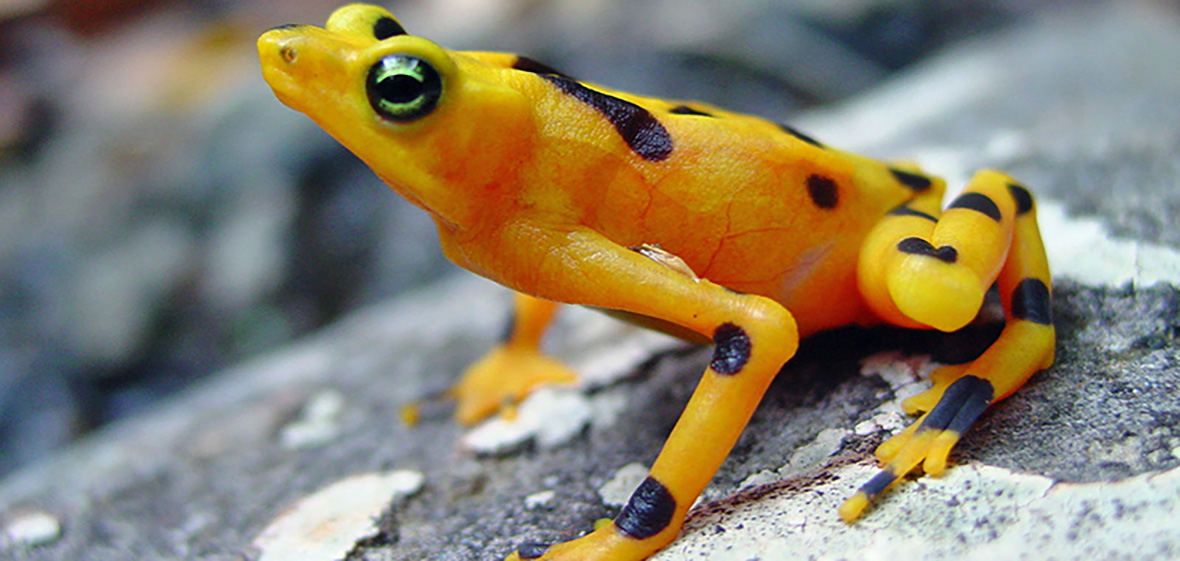Jamie Voyles is looking from another angle at how infectious disease can bring species to extinction, and what can be done to combat it. With a new grant from the National Science Foundation, she will investigate how disease outbreaks subside.
A recent scientific paper, on which she is a co-author, detailed how amphibians are being devastated to extinction around the world, with as many as 90 species now extinct and 500 species experiencing dramatic population declines.
"While disease is driving amphibian species to decline, we have also found that some species are hanging on and we are studying why that may have occurred," Voyles, a biologist in the University of Nevada, Reno College of Science, said.
Her project caught the eye of the NSF, which has awarded Voyles a CAREER Award of $730,000 for her project "An Integrative Approach to Understanding Infectious Disease Dynamics."
"It is challenging to pinpoint the specific host defenses that reduce disease severity in natural populations," she said. "This project will test the hypothesis that host defenses alter infection patterns in a disease known as chytridiomycosis."
Chytridiomycosis is a deadly fungal disease that eats away at the skin of amphibians. It impacts frogs, toads, salamanders and other amphibians. This disease has caused - and continues to cause - dramatic losses of amphibian biodiversity around the world.
In her experiments, Voyles and her team will seek to determine how the skin secretions, an amphibian defense with anti-fungal properties, affect the severity and duration of chytridiomycosis outbreaks. Researchers hypothesize that host defenses, or immunity, influence pathogen infection patterns and reduce the long-term impacts of a disease. Disease outbreaks can be devastating for host populations, but also provide an opportunity to address gaps in knowledge about how diseases work.
"This is a bit different than what we've done in the past, looking at the big picture, finding the species that are out there," she said. "This new one is zeroing in on specific species infected with the fungus - and recovering - to see what is it that allows them to persist while others are suffering losses."
Three species of frog will be studied: the Panamanian common rocket frog (a very fast and quick frog, which are kind of tough to catch); the Sharp-snouted day frog and the Panamanian golden frog (aka Harlequin frog).
"We know where several populations are located, so we know where to look, we have a good track record of finding the tiny frogs," she said. "We'll run diagnostic tests, looking at the immune parameters this time, to determine their innate immune system and active immune factors."
The team will gather from frog populations at high and low elevations as they look at the subjects to see if it's genetics or the environment that makes the differences in species that survive. The team will also use field and common-garden experiments to quantify how skin secretion defenses vary across populations, elevations and seasons. This study will combine cutting-edge experiments with field studies on host defense.
The group, led by Voyles graduate student Keely Biggs, will swab up to 500 frogs over a two month period. They will run detailed test on 10-20 frogs per time point. Field work will be the main focus for the first three years, then education and lab work will take place in the final years of the 5-year grant.
Voyles and her team go to Panama twice a year - in the winter (wet season) and summer (dry season) to get the seasonal samples, and can be in Panama sometimes up to four months at a time. Much lab work is done at The Smithsonian Conservation Biology Institute's Center for Species Survival and El Valle Amphibian Conservation Center in Panama where she partners with scientists.
The CAREER Award project will also broaden science participation through training and research engagement for young women in STEM with implementation of a "20 in 2020" program that will launch 20 young women in their pursuit of higher education in scientific fields. The educational plan includes engagement in the scientific research project; preparation for university coursework; and a tiered mentoring network to support high school, undergraduate and graduate students. The education and outreach activities will be an integral part of the proposed project, helping to increase awareness of the potential of young women in science, the loss of amphibian biodiversity, and the importance of advancing our understanding of infectious disease.
NSF CAREER awards are a foundation-wide activity that offers the NSF's most prestigious awards in support of early-career faculty that have the potential to serve as academic role models in research and education, and to lead advances in the mission of their department or organization.












